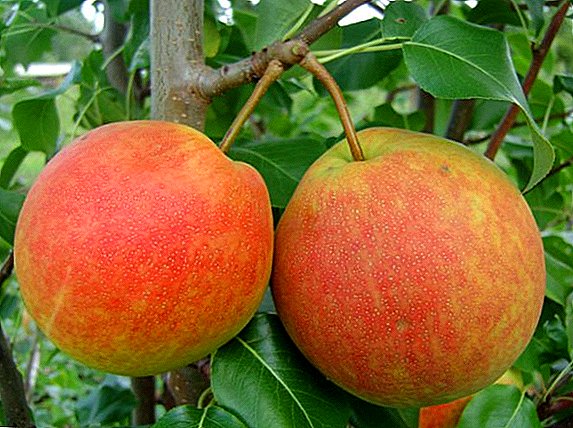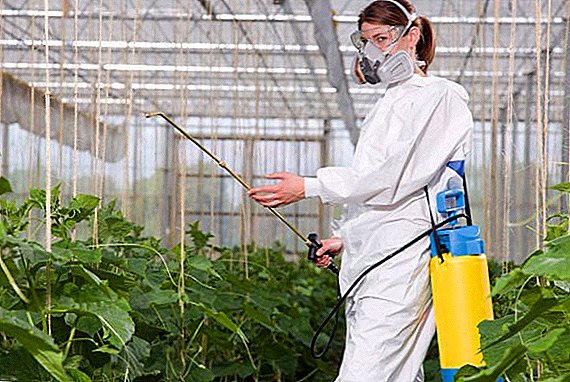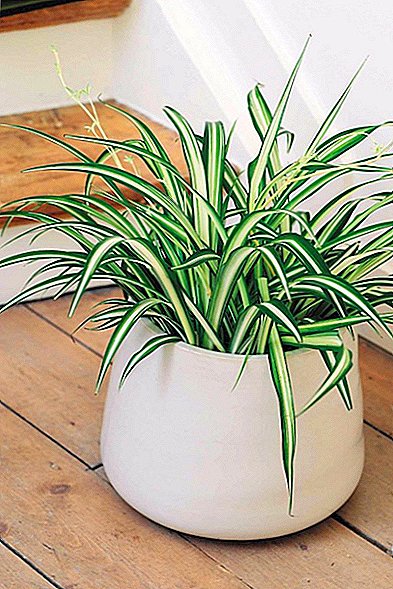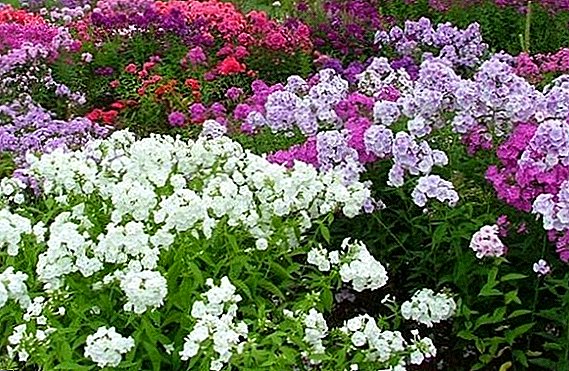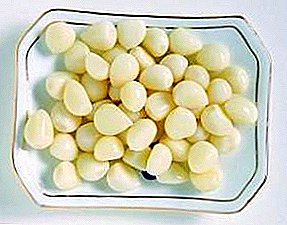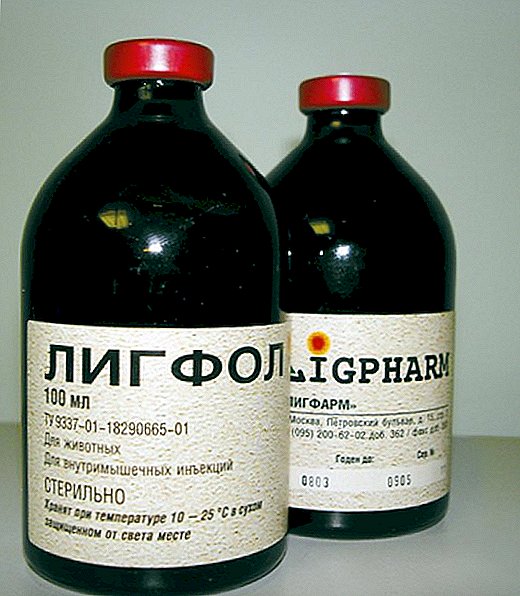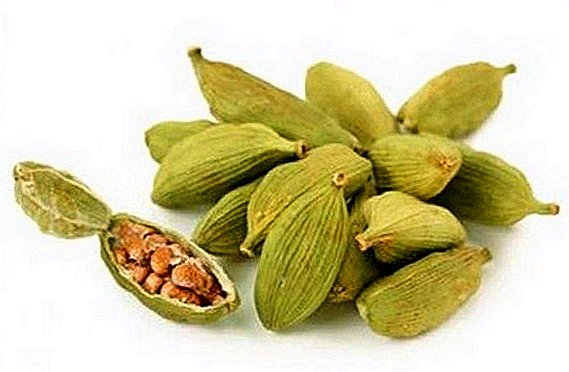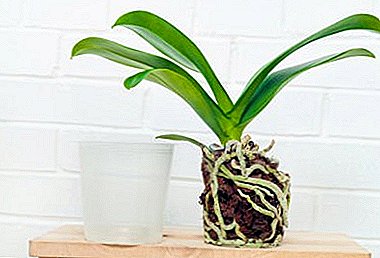
Flower growers who are engaged in orchids, know that such beauty requires a lot of work, attention and cash investments.
For example, the soil in the store for exotic flowers is decent. However, you can cook it yourself, without spending a penny. In this case, the substrate will be better and orchids will surely enjoy it.
Importance of proper soil
Properly selected substrate is a guarantee of health and longevity of exotic beauty.
It is believed that orchids are quite picky about the soil in which they were planted. This is due to the fact that in natural habitat epiphytic varieties grow without any soil at all.
They choose large tree trunks as a place to live, and they take nutrients and moisture from the bark. Therefore, choosing a comfortable “home” for a flower should take into account this specificity.
I would like to add that it is unacceptable for orchids to use ordinary ground as soil - it will destroy it. For the roots, the heavy soil will be a kind of pressure, and will not give the opportunity to fully perform their vital functions.
Is it possible to make yourself?
 Novice flower growers buy ready-made substrate for orchids in garden stores. And their more experienced colleagues, on the contrary, believe that the quality of the soil will work if you prepare it with your own hands. In addition, this substrate has several advantages:
Novice flower growers buy ready-made substrate for orchids in garden stores. And their more experienced colleagues, on the contrary, believe that the quality of the soil will work if you prepare it with your own hands. In addition, this substrate has several advantages:
- minimum cost;
- guaranteed quality components;
- individual selection of ingredients according to the varieties;
- simple recipes;
- drawing up the required proportions.
What is bad store substrate?
Recently, the market for niche substrates for orchids filled. On the shelves of garden centers and flower shops appeared products imported and Russian producers. The main component of such substrates is moss and tree bark. There are expensive mixtures with additional, rare components.
However even products of patented well-known brands do not always have the appropriate quality. Attract buyers with beautiful, bright packages. And inside contains a large amount of peat and soil dust, and the bark - catastrophically little. Such a ratio has a negative effect on the growth and development of the orchid.
Blend components
In order to choose the right mix for exotics, it is important not to be afraid to experiment. Only in this way, it will be clear what composition "to taste" for this particular plant. The main criterion for the correct choice of soil - lush flowering.
The general parameters of soil mix selection for indoor orchids are the same. The substrate should have: lightness, breathability, friability, environmental friendliness, have good drainage properties and pH 5.5-6.5.
Required
 Integral components of the soil mixture for exotic plants are:
Integral components of the soil mixture for exotic plants are:
- tree bark;
- sphagnum moss;
- wood ash;
- fern roots.
It is this composition of natural materials is considered to be the base when preparing the substrate for orchids.
Additional
Additional ingredients are added to the main ingredients.which are no less important. Among them:
- coconut fiber;
- leafy, soddy land;
- lowland peat;
- dry leaves;
- humus;
- scales of pine cones;
- different nutshell;
- expanded clay granules;
- perlite;
- vermiculite;
- pebbles;
- broken brick;
- Styrofoam;
- gravel.
What can you get?
That is, you can buy ingredients and prepare a soil mixture for exotic with your own hands. But it is better to find organic components in nature, because everything is around us.
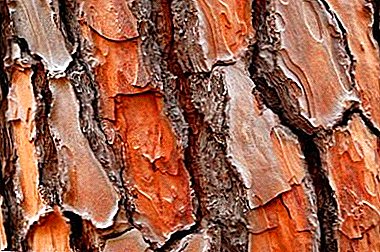 Woody bark. Bark of coniferous and deciduous trees is applied. Optimally pine. It is preferable to look for this component in the pine forest, on fallen trees. It is in inanimate pines that the minimum amount of resin is contained, so unloved for orchids. The bark must always be dry. Best suited top layers. If the fragments found are dark, burnt areas, they should be removed. Pine bark should not only be found, it also needs to be cooked.
Woody bark. Bark of coniferous and deciduous trees is applied. Optimally pine. It is preferable to look for this component in the pine forest, on fallen trees. It is in inanimate pines that the minimum amount of resin is contained, so unloved for orchids. The bark must always be dry. Best suited top layers. If the fragments found are dark, burnt areas, they should be removed. Pine bark should not only be found, it also needs to be cooked.- Fern roots. You can dig in the summer in the woods, choosing a bigger bush. Then clean from the ground, cut into small pieces, dry.
- Sphagnum moss. Grows in forest and marshland. The best time to collect is spring. Moss has bactericidal, moisture-absorbing properties, gives the soil looseness, contains many useful substances and microelements. For planting the natural component is used in dry and wet form.
- Charcoal possesses properties similar to moss, has a sorbing and disinfecting property. Ashes are easy to find in the ashes or burn logs of wood on the fire.
- Peat. Ground varieties of orchids prefer the presence in the soil of this component. It is used to accumulate and retain moisture in the soil. It is important to choose salt-free peat. Grind much do not need.
- Pine cones. In coniferous forests, it is easy to find dead, dry cones. Their scales are used to prepare the substrate, they can replace the pine bark.
- Deciduous, turfy ground and leaves. Leaves and earth can be gathered in the same forest. The main thing for the soil is that there is no excess garbage in the form of sticks, twigs. This natural material is suitable for those representatives of the Orchids, who know how to get useful substances from the earth.
Dry foliage creates a unique microflora in the pot, thus preventing possible diseases of the plant.
What to buy?
Unfortunately, but not all the ingredients of the substrate will be found in the natural environment. Inorganic components should be purchased in the store.
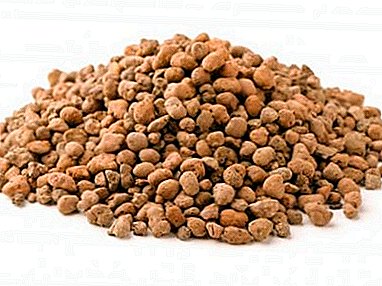 Expanded clay. This building material has established itself as a good drainage. Expanded clay is a natural material obtained by firing clay. The substance is light, porous, inexpensive, environmentally friendly. Fractions of granules are different, in this case, chosen based on the size of the roots.
Expanded clay. This building material has established itself as a good drainage. Expanded clay is a natural material obtained by firing clay. The substance is light, porous, inexpensive, environmentally friendly. Fractions of granules are different, in this case, chosen based on the size of the roots.- Perlite, vermiculite, gravel - environmentally friendly materials necessary for the drainage and loosening of the soil. Sold in construction departments.
- Styrofoam. It is considered an unconventional component of the soil mixture. However, at a later time is becoming increasingly popular. Use foam as baking powder, as well as in the form of drainage. The material is chemically inert, lightweight, non-toxic, gives high friability and permeability.
- Coconut chips, fiber. Components are sold as blocks in specialized stores. They are individually packaged and pre-disinfected.
How to replace the natural composition?
As seen, most of the components of the substrate for orchids - substances of organic origin. However, if you can not get them or buy, materials can be replaced with inorganic.
- Pine bark is replaced with coarse river sand, small pieces of foam or sheet earth.
- Instead of sphagnum moss apply hydrogel, polystyrene, foam rubber.
- As a sorbent, you can use crushed activated carbon, and not wood ash.
- Perlite, vermiculite, brick chips, crushed stone, gravel, pebbles, expanded clay are all interchangeable drainage materials. If there is not one, apply another.
Multiple soil options for plants
 Representatives of the Orchid family, which are grown indoors, are divided into two main groups:
Representatives of the Orchid family, which are grown indoors, are divided into two main groups:
- epiphytic;
- ground.
If we present the percentage ratio, then 90% of epiphytes: dendrobium, zygopetalum, phalaenopsis, cambria, lykasta, masdevalli, cattley. The remaining 10% of ground orchids: cymbidium and papiopedilum. Although they can also grow as epiphytes. Depending on the variety, choose the appropriate composition of the substrate..
For epiphytes
These exotic plants have a root system on top of the soil mixture. Therefore, the main task of the substrate is to maintain the plant in a vertical position, and then evenly absorb moisture, without interfering with the evaporation of excess.
For epiphytic varieties of orchids should not pick up a mixture of soil and peat.
Orchid blend option:
- Two parts of moss, ½ parts of wood ash, five parts of pine bark, ½ parts of dry foliage.
- One part of peat, moss, ash and three parts of bark, cork material.
- We take in equal parts: sphagnum moss, pine bark, charcoal, fern roots.
- One piece of wood ash and five pieces of pine cones or bark flakes.
For ground
Ground sorts orchids, in turn, require enhanced nutrition. Deciduous, turfy ground, peat are not superfluous ingredients of the substrate. Composition:
- In equal parts, sphagnum moss, pine bark, peat, charcoal, and expanded clay granules are mixed.
- Two parts of fern roots, humus and leafy ground, one part of peat, one part of river sand.
- Three parts of leafy land and one part: peat, moss, pine bark.
- One part of dry leaves, three parts of leafy ground, two parts of dry fern roots, one part of sphagnum moss and sand.
How to cook the ingredients, the basic rules
In order to save time and money, experienced orchid owners stock up on the necessary ingredients for the substrate for the future.
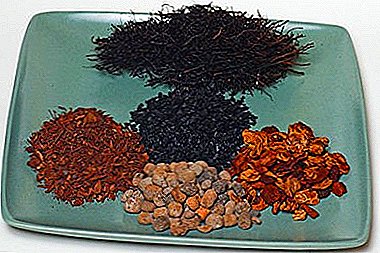 Wood ash It is preferable to choose large sizes, and then grind into pieces of 3-4 cm. Store mainly in plastic bags, without access of air. Powder ash is used as an antiseptic for dusting fresh sections of the plant.
Wood ash It is preferable to choose large sizes, and then grind into pieces of 3-4 cm. Store mainly in plastic bags, without access of air. Powder ash is used as an antiseptic for dusting fresh sections of the plant.- Component sphagnum moss quite moisture-consuming material. Therefore, after collecting it you need to wash and dry in partial shade. Dry moss is packaged in bags and stored in a dark place.
Pine Bark It is taken only in dry form, with no visible traces of the bark beetle, but it is also necessary to know how to prepare it better. You need to choose pieces 1-2 cm thick, thicker bark is more difficult to cut. For disinfection brought natural material should be heated in a slightly opened oven no more than 5 minutes.
Among florists, pine bark is becoming popular, which is less resinous and has a longer decomposition period than pine.
- Underground part of the fern dig out from the earth in the spring or in the late autumn that the plant was without leaves. The roots are cut into small pieces and stored in a sealed package.
Be sure all components collected in the forest should be subjected to heat treatment. Pine cones, charcoal and boiling water, thereby increasing the degree of water absorption.
How to make the substrate yourself at home: step by step instructions
A detailed description of the procedure will eliminate possible inaccuracies and inaccuracies in the process of preparing the substrate. You must follow the sequence of actions.
- Choose one of the substrate options, taking into account the orchid variety.
- Prepare all pre-assembled ingredients.
- The size of the portion of the flower accordingly affects the size of the root system of the flower, the dimensions of the pot.
- Armed with a garden spatula, a basin for mixing natural ingredients, measuring capacity, a flower pot.
- Measure out the necessary proportions of the individual components and pour into the pelvis. Stir the soil with a spatula.
- In a transparent plastic pot form layers. A drainage layer about 3 cm thick is laid on the bottom. After the layer of soil mixture, drainage again and the remaining substrate on top.
If the moisture is not absorbed for a long time, respectively, the soil is wet for a long time, it means that the orchids are not comfortable there. Should add pine bark and ash. And when the reverse situation, when the water does not stay in the pot, add moss and fern roots.
Do not forget to continue to pay attention to the substrate in which exotic beauty sprouts. Because organic substances have the ability to decompose, important characteristics are lost. In this case, the orchid must be transplanted immediately, because the state of the plant directly depends on the quality of the soil.


 Woody bark. Bark of coniferous and deciduous trees is applied. Optimally pine. It is preferable to look for this component in the pine forest, on fallen trees. It is in inanimate pines that the minimum amount of resin is contained, so unloved for orchids. The bark must always be dry. Best suited top layers. If the fragments found are dark, burnt areas, they should be removed. Pine bark should not only be found, it also needs to be cooked.
Woody bark. Bark of coniferous and deciduous trees is applied. Optimally pine. It is preferable to look for this component in the pine forest, on fallen trees. It is in inanimate pines that the minimum amount of resin is contained, so unloved for orchids. The bark must always be dry. Best suited top layers. If the fragments found are dark, burnt areas, they should be removed. Pine bark should not only be found, it also needs to be cooked. Expanded clay. This building material has established itself as a good drainage. Expanded clay is a natural material obtained by firing clay. The substance is light, porous, inexpensive, environmentally friendly. Fractions of granules are different, in this case, chosen based on the size of the roots.
Expanded clay. This building material has established itself as a good drainage. Expanded clay is a natural material obtained by firing clay. The substance is light, porous, inexpensive, environmentally friendly. Fractions of granules are different, in this case, chosen based on the size of the roots. Wood ash It is preferable to choose large sizes, and then grind into pieces of 3-4 cm. Store mainly in plastic bags, without access of air. Powder ash is used as an antiseptic for dusting fresh sections of the plant.
Wood ash It is preferable to choose large sizes, and then grind into pieces of 3-4 cm. Store mainly in plastic bags, without access of air. Powder ash is used as an antiseptic for dusting fresh sections of the plant.